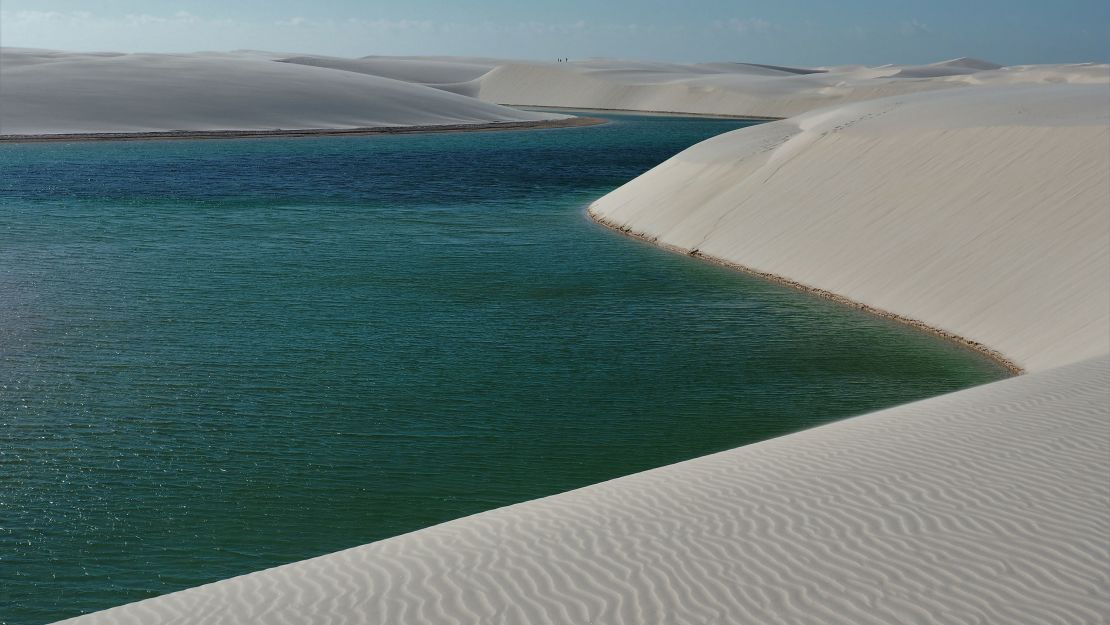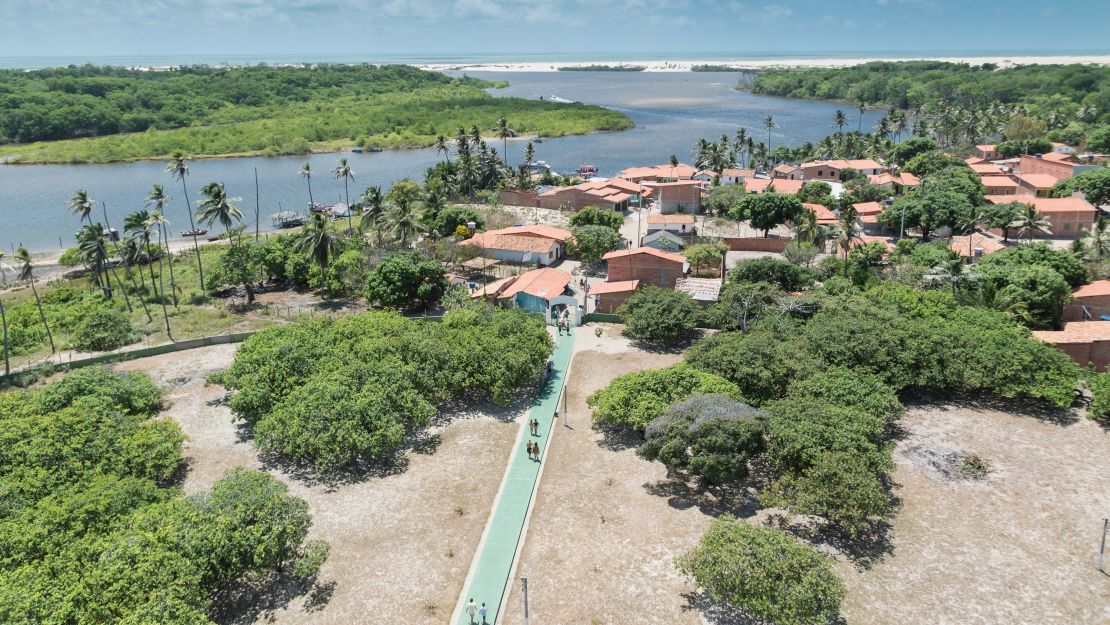Editor’s Note: This CNN Travel series is, or was, sponsored by the country it highlights. CNN retains full editorial control over subject matter, reporting and frequency of the articles and videos within the sponsorship, in compliance with our policy.
As a visitor sets eyes on the brilliant pools of paradise that characterize Brazil’s Lençóis Maranhenses National Park for the first time, it wouldn’t be out of line to assume hallucination.
Dazzling blue lagoons numbering in the thousands hide below towering sand dunes draped across 598 square miles. Every single one is inviting – scratch that, begging! – travelers to toil across the sand and hurl themselves into the beautiful abyss. At least one imagined version of heaven surely unfolds in a scene similar to this.
Brazil’s Lençóis Maranhenses National Park may not seem real to the uninitiated, but this phenomenal park, a direct shot 1,662 miles north of Rio de Janeiro in Maranhão state, is neither a mirage nor a movie set. It is at once one of the world’s most dramatic sandscapes – otherworldly dunes only broken up by cerulean lagoons that pepper the sandy hills between March and September – and one of the world’s least beaten paths.
Rio, Iguaçu Falls and the Amazon are far and away Brazil’s most visited destinations. The northern Brazilian state of Maranhão makes the itineraries of the most dedicated Brazilophiles only.
Those who do venture this far north often combine a visit to Lençóis Maranhenses with a tour of the historic colonial center of Maranhão’s capital, São Luis, a UNESCO World Heritage Site located about 150 miles west of the park. Here many restored buildings are adorned with detailed Portuguese decorative ceramic tiling (known as azulejos).
Another worthwhile add-on is the small village of Alcântara, located across the Sâo Marcos Bay from São Luis, a wonderfully cinematic step-back-in-time that’s home to a melange of preserved, ruined and restored mansions, homes and churches laid out on artistic crisscrossed cobblestones. The village is also home to colonies of red ibis (guarás), which color the surrounds bright scarlet at sunrise.
Lençóis is the Portuguese word for bedsheets, which seems like an odd name for a national park, until you see the expanse from a drone’s-eye view. From the air, the landscape gives the appearance of rolling sheets pitched across the world’s most picturesque waterbed.
In addition to the lagoons, the park is also home to beaches, mangroves and some fascinating fauna (turtles and migratory birds among them).
The dramatic scene that characterizes the protected area is the result of sedimentary deposits carried to the Atlantic Ocean by two rivers – the Parnaíba and Preguiças – which are subsequently driven back as far as 31 miles inland by high winds in dry season.
Despite appearances, Lençóis Maranhenses receives too much rainfall to be considered a desert. In fact, it’s the rain that forms the freshwater lagoons, which are unable to drain due to impermeable rock beneath the sand. The phenomenon is typically at its most beautiful from July to August.
Getting to Lençóis Maranhenses is no simple task.
The easy way is flying into Marechal Cunha Machado International Airport in São Luis, from which four daily buses make the five-hour drive east to the small riverside town of Barreirinhas, the main gateway to Lençóis Maranhenses. Santo Amaro, a less popular access point 3.5-hour’s drive east of São Luís, also offers entry infrastructure to the park.

The adventurous way is to make your way over land from state of Ceará hotspot Jericoacoara, some 240 miles east of Barreirinhas, using a combination of buggies and public transport.
Along with its size, the park’s isolation on a far-flung edge of Brazil means this South American Eden is spectacularly uncrowded. Tour options into the park include multi-day treks, scenic flights, skydiving (August only) and most popularly, 4×4 day trips.
Whether you enter the vast expanse on two feet or four wheels, you’ll never have to worry about kicking up a face full of sand to anyone else around.
Organized tours into the park will always take in the most famous lagoon, the Blue Lagoon, but seeking out other cradles of cobalt in which to take a dip away from the tour groups should be your goal.
Ask your guide to steer clear of fellow tour groups and find your own private paradise. Few things are as satisfying as having a crystal-clear freshwater pool all to yourself after trudging across piles of sand dunes in the blaring midday sun.
There are two isolated villages among the dunes. Caburé, 64 miles northeast of Barreirinhas, is little more than a sand peninsula between the river and the Atlantic ocean.
It’s a popular lunch destination for those on river tours, but staying overnight here truly feels like a discovery. You won’t share the sands with more than a few tourists, if that, after the day trippers depart. The handful of rustic restaurants and inns, called pousadas, can almost feel like a ghost fishing village by sunset.

Atins is a larger village spread amid dune vegetation that’s home to a noticeable foreign population and several charming pousadas. The advantage of coming this far – it’s about a 3.5-hour passenger boat ride along the river from Barreirinhas – is you can access far more remote regions of the park. Atins is also an idyllic windswept oasis to lose a few days or tuck away and write a novel.
Both villages make for a fantastic base for enjoying the park over multiple days, setting out on small daily trips to far-flung lagoons and returning every evening to enjoy ravishing sunsets and stunningly fresh seafood dinners.
Both Caburé and Atins are reachable via the Preguiças river from Barreirinhas. The waterway, the most scenic entry route into Lençóis Maranhenses, is lined with mangroves, sand dunes and swaths of exotic palms (including acai, the Amazonian palmberries that make for one of Brazil’s tastiest treats).
Navigating the river’s twists and turns through such surreal scenery is a perfect way to laze about Brazil’s northern limits. Fittingly, the river’s name means “lazy” in Portuguese.
Read the full article here


